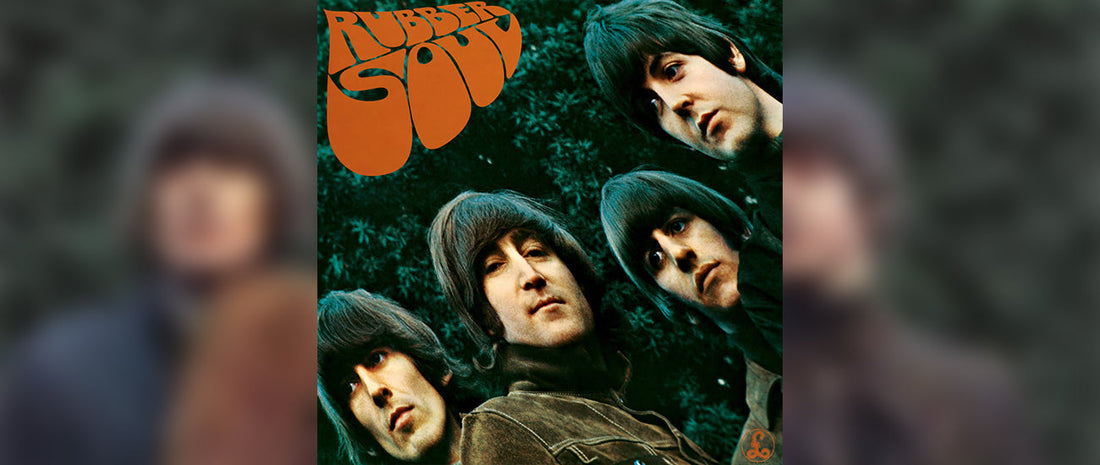

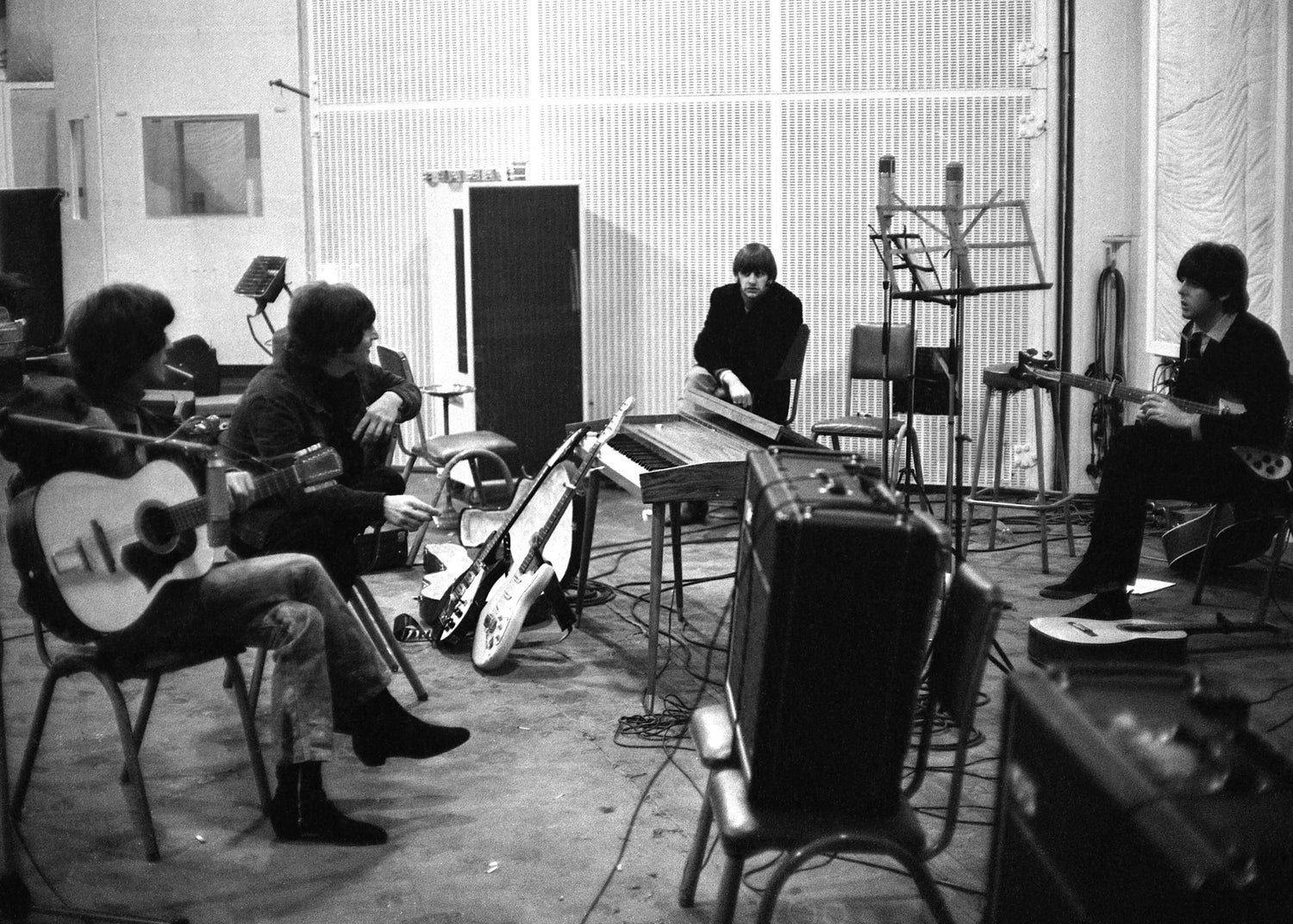
Rubber Soul
This (or any) retrospective of the Beatles' classic LP might be titled Beyond Beatlemania, The Turning Point of Popular Music, The Dawn of the Album Era, or one of many other names. Although each is accurate and descriptive, none entirely summarizes the impact and ongoing legacy of the musical milestone known as “Rubber Soul.”
Over the years, the album has lost none of its luster, awaiting new generations of listeners to discover and enjoy it. Yet, Rubber Soul is more than just a collection of great songs. It takes a little understanding of the remarkable times and events surrounding the album to grasp how transformational Rubber Soul was in 1965 and how influential it remains today.

The Beatles with Ed Sulivan, February 1964
Beyond Beatlemania
Between the start of Beatlemania and Rubber Soul, the Beatles rose from a small club act to a worldwide phenomenon. In only a year and a half, the band had already scored nine consecutive singles and an unbelievable five #1-selling albums (not to mention two feature films and endless touring). Combined with their world-class songwriting talent, the Beatles' fresh style and persona made them the world's most successful pop artists and a youth culture powerhouse.
However, they are likely approaching the limit of success that loveable mop-tops singing about teenage love could bear (at this time, the Beatle's likenesses stared in a weekly Saturday morning cartoon). Without essential change and growth, “more of the same” would lead to overexposure and diminished popularity despite their finely crafted songs.
This probable outcome likely never occurred to the band. By the time the Beatles were rushed into the studio to fulfill their two album-a-year recording contract, the boys were beyond ready to evolve.
“’ Rubber Soul’ was my favorite album, even then. I think that it was the best one we made. The most important thing about it was that we were suddenly hearing sounds that we weren’t able to hear before. “I think Rubber Soul was the first of the albums that presented a new Beatles to the world. Up to this point, we had been making albums that were rather like a collection of their singles, and now we were beginning to think about albums as a bit of art in their own right.”
-George Martin (Beatles Producer).

The Dawn of the Album Age
Due to their consistent success, the Beatles' record company (EMI) Parlophone/Capitol began allowing the band more control over the details. For the first time, the Beatles were granted takeover of the album cover art, and amazingly, Capitol allowed Rubber Soul to be released without an advance single. This move permitted radio DJs to pick and choose from any song on the album they wished to broadcast—a privilege never before extended to any major label recording artist. Most importantly, the band was granted far more artistic control over the studio sessions. This newfound artistic freedom led to future Beatles milestones like “Revolver,” "Sgt. Pepper,” and "The White Album,”……and it all started on Rubber Soul.
Rubber Soul completely differs from anything Beatles fans (or otherwise) expected. The songs are an eclectic mix of American Soul (hence the tongue-in-cheek title), Country, Folk, Blues, and some Classical and Jazzy elements. The stylistic blending and experimentation showcased in "Rubber Soul" clearly represent the Beatle's evolution in sound and direction. The album also significantly changed the course of other popular bands and artists of the era—and with its flow of great material (and absence of throwaway “filler tracks"), Rubber Soul is often cited as the dividing line between the “Singles-Era” and “The Album Age.”
“I’d never heard a collection of songs that were all that good before--And not just about love--They’re about a lot of different things, but they all go together, somehow. When we first listened to Rubber Soul, I said to myself, now I’m gonna make an album just as good as Rubber Soul.
-Brian Wilson (on creating the Beach Boys’ epic “Pet Sounds”)

Creating Rubber Soul
To say the Beatles were on a tight schedule is grossly understated. Only days after returning from their North American “Help” tour, the band had just weeks to write and record their next album, which was due for release by the holiday season. With no new songs ready, the Beatles needed to pull a rabbit out of the hat. Turning out anything less than another #1 and a new musical direction would have likely cost the Beatles their newfound artistic control or rendered them a relic of the early British Invasion.
Although Rubber Soul was recorded at EMI’s most advanced studio of the era, The Beatles were limited to only four tracks of multitrack recording. Compared with today’s digital recording equipment, the recording process was far more limited, challenging, and time-consuming.
The band entered the studio on October 12 and spent 13 days in marathon sessions (and a few extra days composing songs). Amazingly, the final mixdown and album sleeve was completed by the deadline. On November 15th, the Beatles emerged from EMI studio #2 with 14 original tracks for Rubber Soul, plus the “Double A-side” single of Day Tripper b/w We Can Work it Out*.
*The Song list used in this retrospective represents the UK version of Rubber Soul, as the Beatles intended. “Day Tripper” and “We Cab Work It Out” did not appear on the album and were only available as singles.
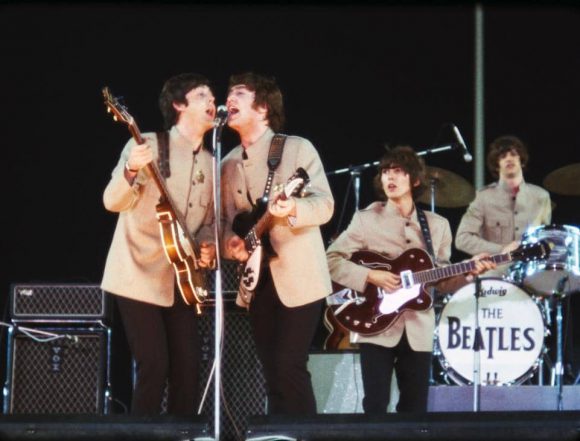
The Beatles in matching suits at Shea Stadium, just weeks before starting “Rubber Soul”
Despite the pressure to get the job done, Lennon/McCartney and Harrison (who contributed two songs) display a new level of maturity and quality of songwriting (musically and lyrically). With the help of George Martin, the band employs untried studio techniques, unusual instruments, and sounds. At times, Rubber Soul is experimentally out of step with the era yet remains completely accessible and utterly satisfying.
Although The Beatles craved new sounds and otherworldly effects and pioneered new ways to use the recording studio, at the core, they were a guitar-driven band. Although heavily Orchestrated albums like Sgt. Pepper, Magical Mystery Tour, and Yellow Submarine soundtracks are a departure from the typical guitar bass and drums formula, Rubber Soul certainly does not. Each song is steeped in acoustic and/or electric guitars, prominent bass lines, and percussion.
Who played what? Rubber Soul, Track by Track
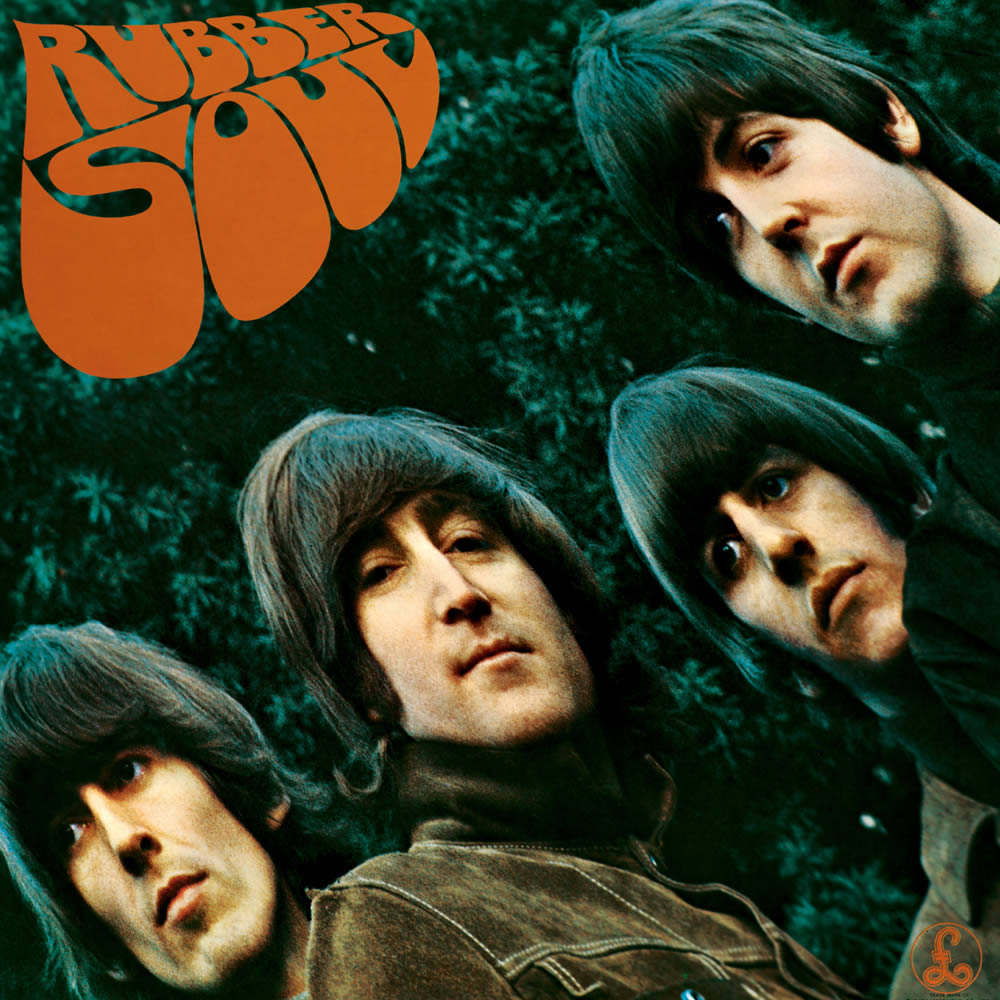
"Drive My Car"
The album starts with a solo lead guitar and smoothly off-time bass guitar pickup notes, leading to a Muscle-Shoals-inspired guitar riff (doubled on the bass guitar an octave lower) that repeats throughout the track. In the middle 8, an improvised guitar solo (recorded on the same track as the guitar at the intro and outro) is bright and full of great vibrato, bending double stops, and even a little bottlenecking.
The intro and solo guitar work is none other than that of Beatles bassist Paul McCartney, taking a crack at the lead guitar role. He used his Epiphone Casino, plugged into the Blonde Fender Bassman (an amp that all the Beatles loved and used repeatedly on Rubber Soul and future Beatles records). The bass track is also Paul, on his newly acquired Ricky 4001s. Another important first is Harrison’s use of his Fender Strat. The song's backbone riff pops with its unmistakable sound, plugged into an AC30TB. This Strat will become one of Harrisons' most heavily relied-upon guitars. It's the same Strat that was later transformed into "Rocky" using dayglow paint and brightly colored nail polish.
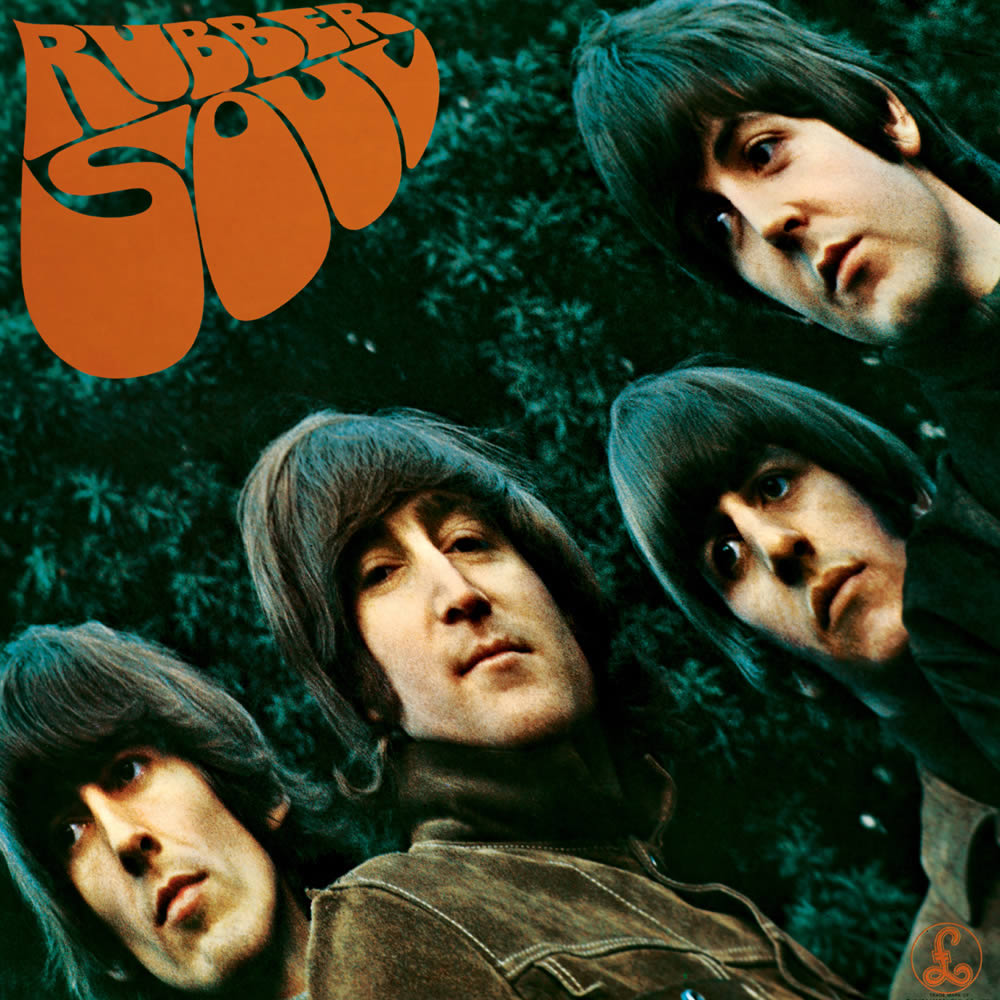
"Norwegian Wood"
One of Rubber Soul’s many acoustic numbers, Norwegian Wood features John and George strumming on their Gibson J-160e acoustic/electric guitars. Although the guitars are fitted with a pickup for amplified (live) performance, they are recorded unplugged to preserve the natural sound. Paul played his Hofner 500/1 bass on this track due to its deep, mellow tone, and it’s a perfect choice for the subtle part.
George Harrison famously doubled the acoustic guitar theme on the Sitar, introducing the classical Indian Sitar to the Western World. The Sitar (first heard on Norwegian Wood) would soon play a massive role in popular music, especially in the psychedelic era. Immediately after Rubber Soul, the sitar can be heard in music by the Rolling Stones, Yardbirds, Donavan, The Moody Blues, and more, leading to the creation of the electric Sitar.
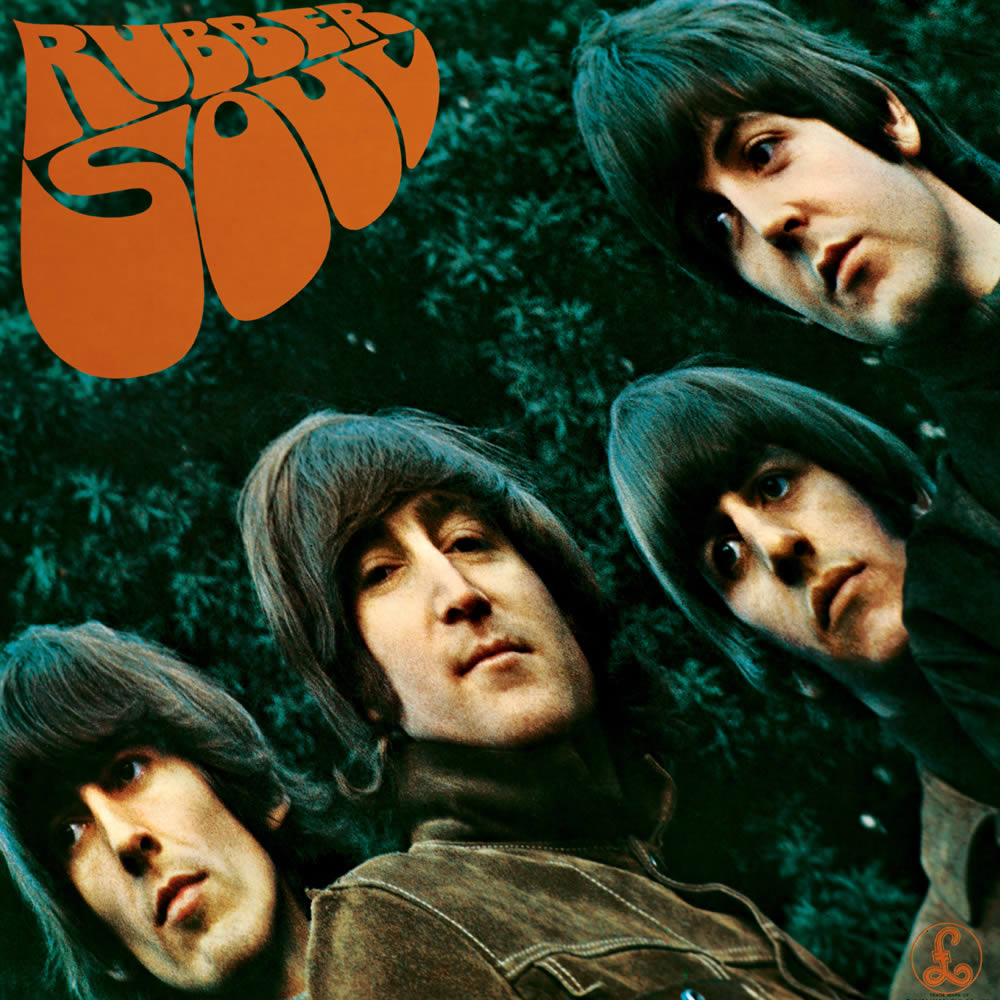
"You Won’t See Me"
The band’s recent tour of America seems to have significantly influenced McCartney's playing. His arpeggiated bass line in “You Won’t See Me” is inspired by the Motown sound and bass guitar style of the great James Jamerson. It’s another track that Paul opted for the low growl of the Hofner 500/1 bass, played through the Vox AC100. Harrison outlines the clever chord progression with a bright and biting tone, courtesy of his new favorite Strat and AC30TB.

"Nowhere Man"
Nowhere Man is a standout track on a standout album. It has all the elements that define the vibe of Rubber Soul encapsulated in one song. The Rhythm tracks display the album's warm and folksy acoustic nature, with John and George driving the song strumming on their (again) unamplified Gibson Acoustic J-160s. Paul outlines the progression with tastefully rhythmic and melodic precision (with some help from his new Rickenbacker 4001s).
Beatles producer George Martin had to use some unconventional thinking when the band asked for more high-end on the electric guitar-driven parts of the song. When “all the treble” on the channel strip proved insufficient; Martin cascaded multiple EQs to achieve the natural/unnatural effect. The result is a magnificent-sounding guitar solo (played by John and George in unison) using matching AC30s—and supercharged sounding pair of matching Fender Stratocasters.

"Think For Yourself"
One of the two Harrison songs and one of the most unique tracks on an album of unique tracks. “Think For Yourself” (unlike anything before Rubber Soul) is not an attempt to record a “hit.” It's also one of the first songs to use a “Fuzz Box.” Today, Fuzz, Distortion, and Overdrive are as much a part of Rock Music as the guitar itself, but back in 1965, it’s practically unheard of. Preceded only by a few months on Keef Ricard's guitar on “Satisfaction,” the Fuzz effects are applied to the Bass Guitar on Think For Yourself and featured far more prominently.
The players and instruments on this track feature George Harrison punctuating the chord changes with his Strat/AC30 low down (and paned left) the mix. The song’s two Bass lines feature Paul on his 4001s, plugged into his Fender Bassman amp. The “true” bass line follows the progression closely, adding rhythm and harmony elements. The “Fuzz Bass” part is high in the mix and used more like a lead guitar throughout the song between and under the lead vocal part. Paul’s early use of the Vox Tone Bender remains one of the most noted examples of “Fuzz Bass” ever recorded.
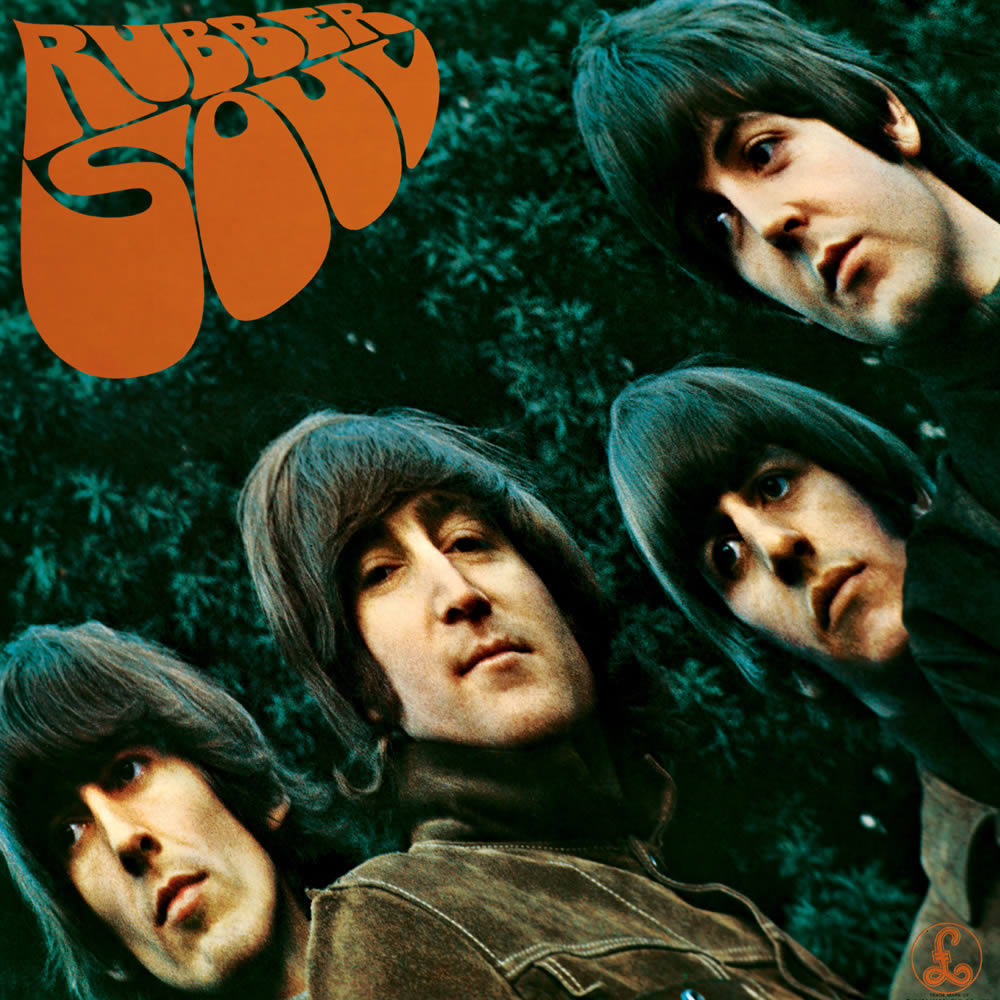
"The Word"
“The Word” features classic Rock band instrumentation, with Guitars, bass, drums, piano, and organ (in this case, Beatles producer George Martin plays the studio’s Mannborg Harmonium). The Rhythm guitar part features John Lennon giving his newly acquired ’61 Strat a whirl. George Harrison plays the lead guitar (overdubbed). It’s an outstanding example of a Strat and AC30 set nearly at the point-of-breakup. Paul McCartney’s bass line is articulated with precision, even when he shows off his speed and dexterity. The sound comes from his Rickenbacker 4001s and Fender Bassman amp.
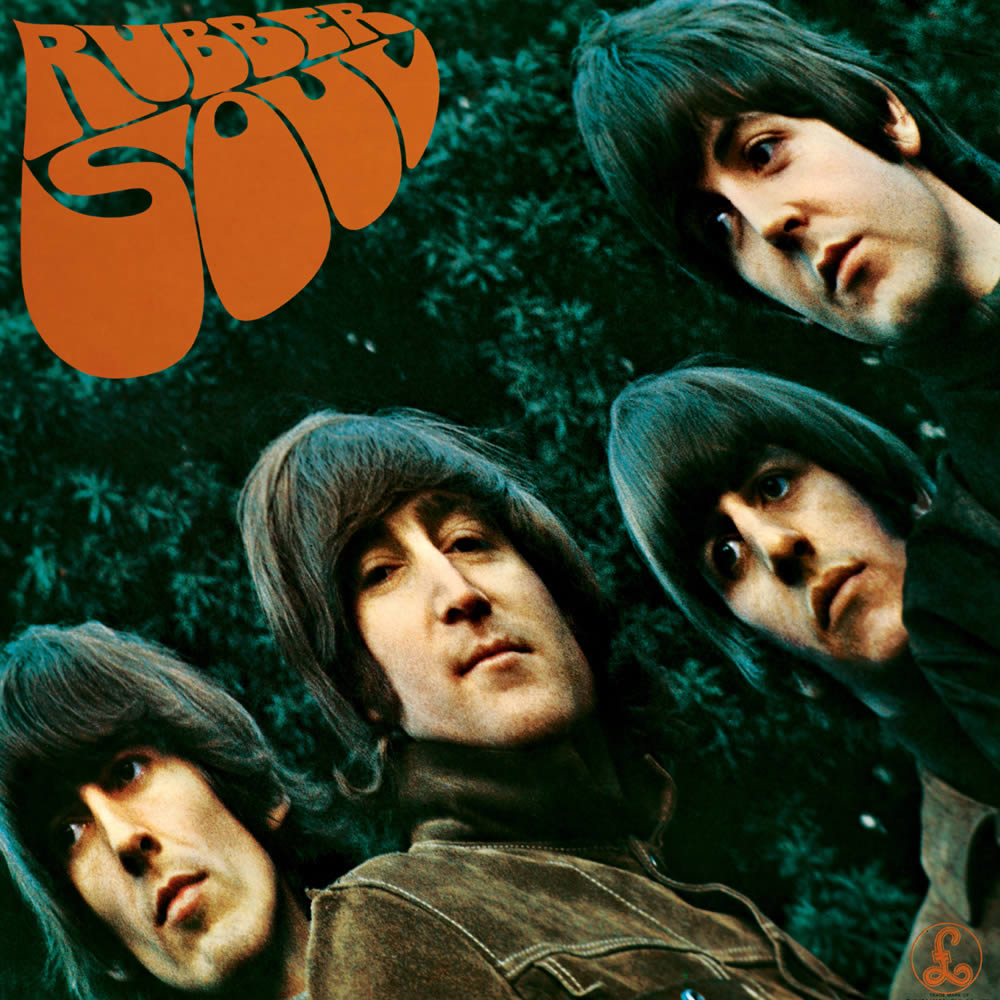
"Michelle"
Michelle is the only traditional love ballad on the album. Oddly enough, its origins go back to the Beatles' pre-fame days, when they’d goof around, singing in broken French to impress the local girls.
Michelle is filled with outstanding guitar playing. Mainly an acoustic number, Paul and George play the chord progressions and embellishments (Paul on his Epiphone Texan and George on his unamplified Gibson J160E). John can also be heard using his hand-built nylon-string classical guitar. Paul plays the bass guitar track, choosing his old standby Hofner 500/1 for its deep, mellow sound.
The masterfully written and played electric guitar solo is the source of much debate. The Melody was written by Beales producer George Martin and played by Harrison, but on what guitar? It sounds like a Hollowbody electric with the tone rolled down on the neck pickup. It may have been George’s Gretsch Tennessean. Others insist it was the rented Gibson ES-347TDS used as backup on the Help Tour. Rubber Soul session photos do show Harrison with the Gibson guitar. Either way, the tone and execution are fantastic.
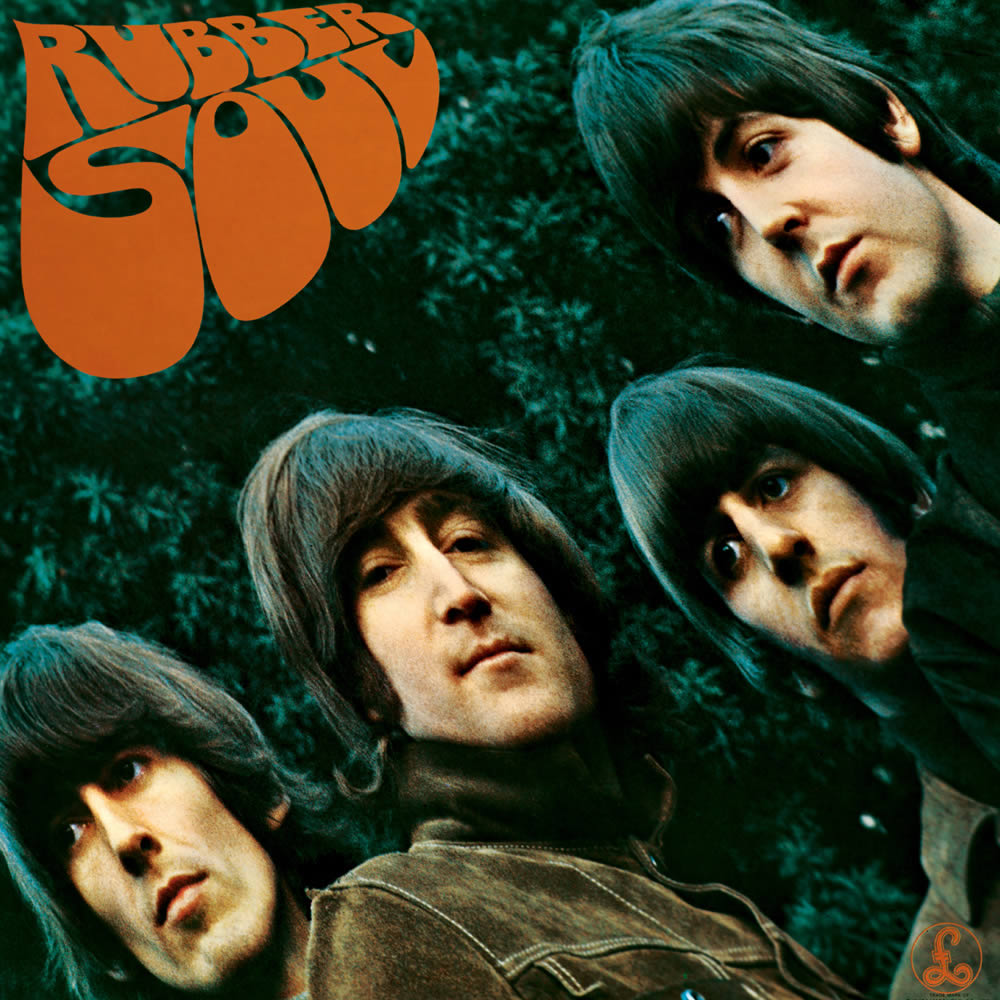
"What Goes On"
Written in the style of Buck Owens, Lennon & McCartney wrote this Country/Pop song expressly to feature Ringo Star on lead vocals. “What Goes On” marks the last time George Harrison will utilize his Gretsch guitars on a Beatles album. Using his 1963 Gretsch Tennessean, Harrison laid down some of his favorite “Chet Atkin's style” riffs, which are prominent throughout the song. His guitar appears on multiple tracks (any track with available space) to achieve the busy mix of twang. If you listen with headphones, you can hear his parts abruptly start and stop due to the limited space on the 4-track recording.
Paul plays a waking bassline on his Hofner 500/1, and Lennon adds rhythm guitar on his Rickenbacker 325 Capri.

"Girl"
This slow-tempo acoustic composition features unconventional studio techniques and crafty use of acoustic guitars, filling this simple song with interesting sounds and textures. The over-compressed lead vocal is so present, John Lennon drawing a breath before the words and melody of the chorus is just as out front as his voice.
The acoustic guitar parts are masterfully written and unconventionally played. John Lennon plays his (unamplified) Gibson J-160e with a capo, providing the song's backbone. Paul follows the chord progression, sticking to the root notes on his Rickenbacker 4001s with AC100. Harrison cleverly uses the Framus “Hootenanny” 12-string acoustic with a capo high up the neck to create a percussive Sitar-like sound and texture. Harrison's inspired addition transforms this great song into something more memorable.

"I’m Looking Through You"
I’m Looking Through Youis packed with quirky elements that add flavor. To begin with, the simple percussion accompaniment is said to be Ringo tapping a matchbox (or possibly his leg) only to the “crossed-leg” on the floor with acoustic guitar intimacy. John and George handle all the acoustic guitar work, each strumming on a Gibson J160e. Paul handles all the electric parts (bass and guitar). Paul used his 4001s and AC-100 touring rig for the clear and precise bass line. On the guitar embellishments and quick pull-off runs, the Epiphone Casino and Fender Bassman sound magnificent in Pauls hands.

"In My Life"
After 60 years, this timeless classic needs no introduction. At the time of Rubber Soul, “In My Life” is the Beatles' most lyrical mature song thus far, exploring bittersweet memories of life, love, and death. It’s also musically just as far removed from songs like “She Loves You” or even “Help.”

"Wait"
The electric guitar-driven song is the 2nd song on the album to feature an outboard guitar effect. This very confusingly named Vox Tone Pedal is better described as a simple volume pedal. Harrison uses it throughout the song, adding an entirely different and exciting sonic edge to the track. It’s hard to miss the biting tone of Harrisons' new favorite Stratocaster. Lennon takes his old favorite Rickenbacker 325 Capri out for contrast on the rhythm track, and Paul laid down the bass with his old favorite 500/1.
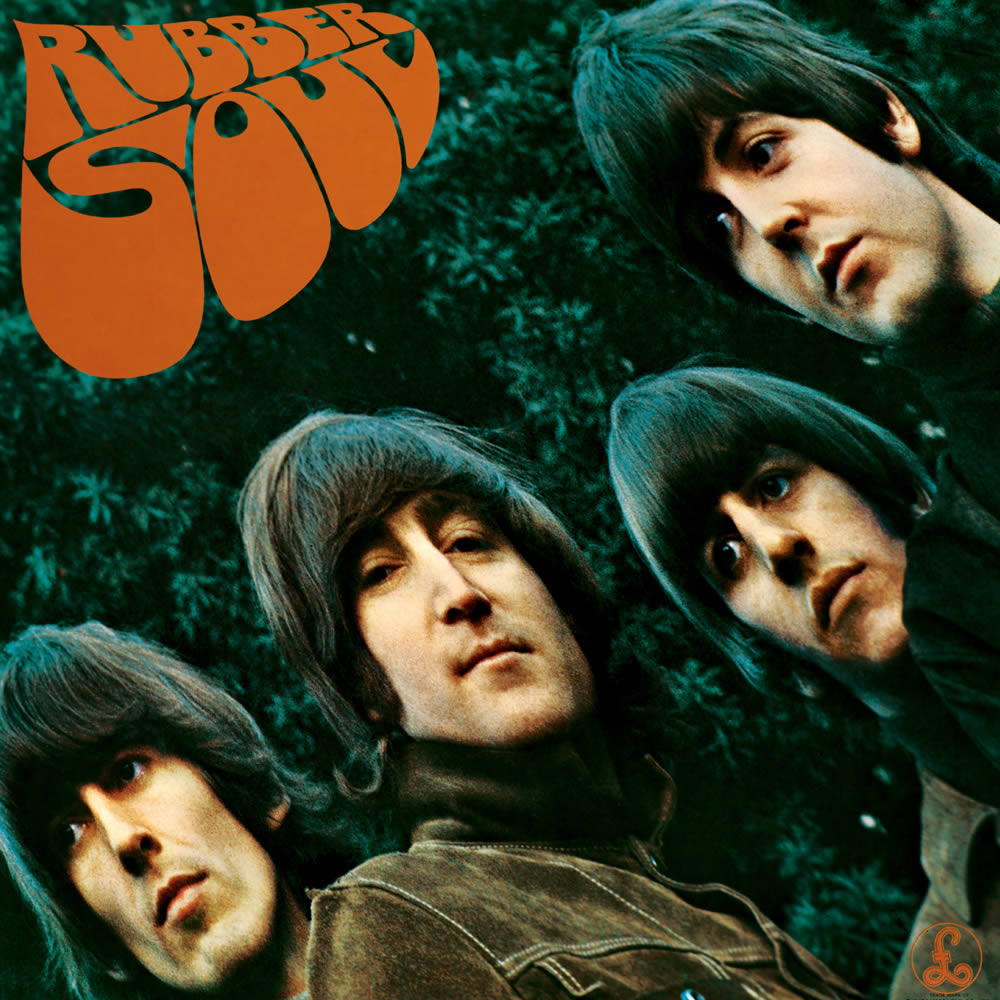
"If I Needed Someone"
Harrison's second composition on the album is a “not so loving, love song" and a jangling feast for the ears. Paul plays a melodically pleasing bass line on his 4001s and AC100 amp that helps drive the song and compliments the rhythm guitars. Lennon’s powerful rhythm playing drives gives contrast and power in the lower registers with the unmistakable tone of his Fender Strat. The song's dominant guitar sound unquestionably comes from Harrison's new 1964 rounded-top Rickenbacker 360/12. With a capo high up the neck, Harrison’s playing rides high above the other instruments and voices, filling the track with high register chime and jangling tone with his Vox AC30TB.
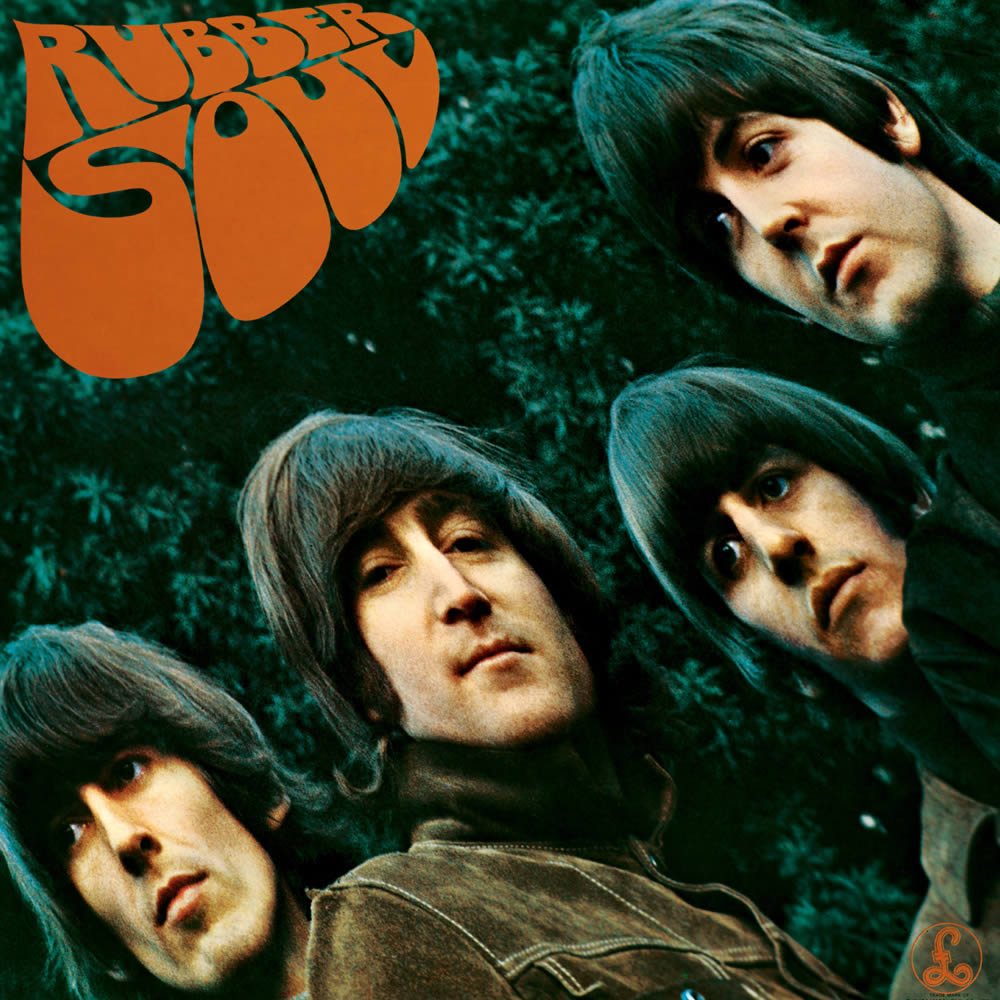
"Run For Your Life"
The only song on Rubber Soul that was composed before work on the album officially began is “Run for Your Life.” Although it flows with the other tracks, it has a slightly different “earlier Beatles era” sound, feel, and even instrumentation. Paul Plays the Hofner 500/1 with the ac100 touring rig; John plays his unamplified J160E, and Harrison takes a final spin on his Gretsch Tennessean.
Read more about the Gear of "Rubber Soul" here:
-

Alto Music Holiday Gift Guide 2025
The Holidays Are Here — and So Are the Best Deals of the Year The holiday season can get hectic—but there’s no need to let the “holiday crunch” become overwhelming. At...
Alto Music Holiday Gift Guide 2025
The Holidays Are Here — and So Are the Best Deals of the Year The holiday season can get hectic—but there’s no need to let the “holiday crunch” become overwhelming. At...
-

Blast From the Past: 50 Years of "Wish You Were...
With industry success to back it up, many Pink Floyd fans consider "Dark Side of the Moon" the "greatest album" ever made. With the same breath, the fans (and the...
Blast From the Past: 50 Years of "Wish You Were...
With industry success to back it up, many Pink Floyd fans consider "Dark Side of the Moon" the "greatest album" ever made. With the same breath, the fans (and the...



